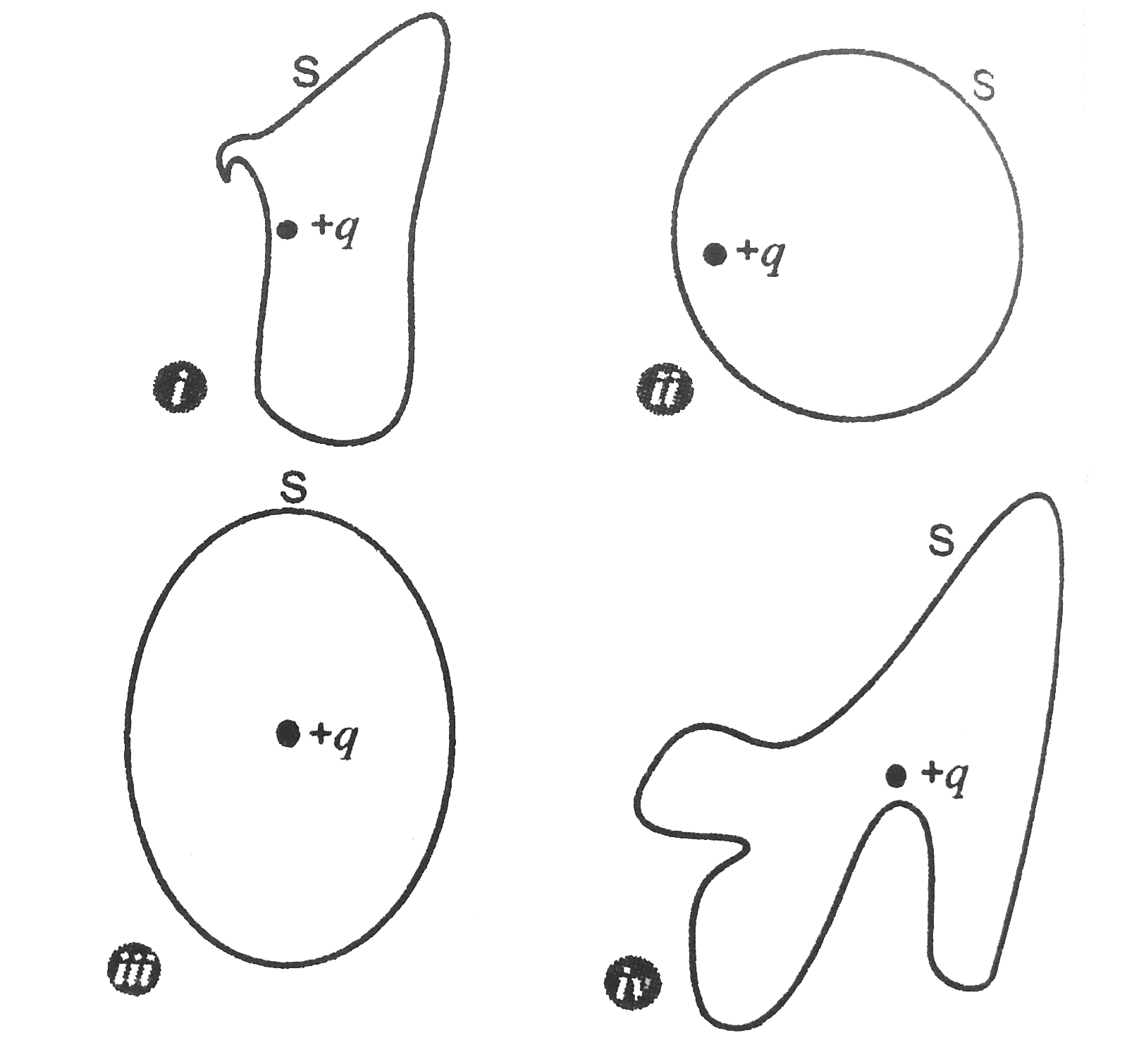The electric flux coming out of the equi-potential surface is -
perpendicular to the surface
parallel to the surface
in all directions
zero
The correct Answer is:A
To solve the question regarding the electric flux coming out of an equipotential surface, we can follow these steps:
1. Understanding Equipotential Surfaces:
- An equipotential surface is defined as a surface where the electric potential is constant. This means that no work is done when moving a charge along this surface.
2. Work Done and Electric Field:
- The work done W in moving a charge q in an electric field E is given by the formula:
W=F⋅ds=qE⋅ds⋅cos(θ)
- For the work done to be zero, cos(θ) must be zero, which occurs when θ=90∘. This indicates that the force F (due to the electric field) and the displacement ds are perpendicular to each other.
3. Direction of Electric Field:
- The electric field lines are always directed from regions of higher potential to lower potential. Therefore, the electric field is perpendicular to the equipotential surfaces.
4. Electric Flux:
- Electric flux ΦE through a surface is defined as:
ΦE=E⋅A⋅cos(ϕ)
- Here, E is the electric field strength, A is the area of the surface, and ϕ is the angle between the electric field and the normal to the surface.
5. Applying to Equipotential Surfaces:
- Since the equipotential surface is perpendicular to the electric field, the angle ϕ is 90∘. Therefore, cos(90∘)=0.
6. Conclusion:
- As a result, the electric flux ΦE through the equipotential surface is:
ΦE=E⋅A⋅cos(90∘)=0
- Thus, the electric flux coming out of the equipotential surface is zero.
Final Answer:
The electric flux coming out of the equipotential surface is zero.
- An equipotential surface is defined as a surface where the electric potential is constant. This means that no work is done when moving a charge along this surface.
- The work done W in moving a charge q in an electric field E is given by the formula:
W=F⋅ds=qE⋅ds⋅cos(θ)
- For the work done to be zero, cos(θ) must be zero, which occurs when θ=90∘. This indicates that the force F (due to the electric field) and the displacement ds are perpendicular to each other.
- The electric field lines are always directed from regions of higher potential to lower potential. Therefore, the electric field is perpendicular to the equipotential surfaces.
- Electric flux ΦE through a surface is defined as:
ΦE=E⋅A⋅cos(ϕ)
- Here, E is the electric field strength, A is the area of the surface, and ϕ is the angle between the electric field and the normal to the surface.
- Since the equipotential surface is perpendicular to the electric field, the angle ϕ is 90∘. Therefore, cos(90∘)=0.
- As a result, the electric flux ΦE through the equipotential surface is:
ΦE=E⋅A⋅cos(90∘)=0
- Thus, the electric flux coming out of the equipotential surface is zero.
The electric flux coming out of the equipotential surface is zero.
Topper's Solved these Questions
- ELECTROSTATICS-IIBOOK - MOTIONCHAPTER - ELECTROSTATICS-IIEXERCISE - Exercise - 2 (Level - I) Section B - Properties of conductors
9 Videos
- ELECTROSTATICS-IIBOOK - MOTIONCHAPTER - ELECTROSTATICS-IIEXERCISE - Exercise - 2 (Level - I) Section C - Spheres Problem, Electrostatics pressure
12 Videos
- ELECTROSTATICS-IIBOOK - MOTIONCHAPTER - ELECTROSTATICS-IIEXERCISE - Exercise 1 (Section D - Plates)
2 Videos
- ELECTROSTATICS - I BOOK - MOTIONCHAPTER - ELECTROSTATICS - I EXERCISE - EXERCISE - 4 (Level -II) PREVIOUS YEAR - JEE ADVANCED
13 Videos
- ERRORS , THEORY BOOK - MOTIONCHAPTER - ERRORS , THEORY EXERCISE - EXERCISE 4 (LEVEL -II)
10 Videos
Similar Questions
An electric dipole having dipole moment 2×10−6 C-m is enclosed by a closed surface. Determine the net electric flux coming out of the given closed surface?
View SolutionAs shown in figure a closed surface intersects a spherical conductor. If a negative charge is placed at point P. What is the nature of the electric flux coming out of the closed surface?

View Solution
Knowledge Check
The electric field lines coming out of an equipotential surface are
Aperpendicular to the surfaceBparallel to the surfaceCin all directionsDzeroThe electric flux through the surface
 Ain fig. (iv) is the largestBin fig. (iii) is the leastCin fig. (ii) is same as fig.(iii) but is smaller than fig.(iv)DIs the same for all the figures.
Ain fig. (iv) is the largestBin fig. (iii) is the leastCin fig. (ii) is same as fig.(iii) but is smaller than fig.(iv)DIs the same for all the figures.The electric flux through the surface
 Ain fig, (iv) is the largestBin fig, (iii) is the leastCin fig (ii) is same as a fig (iii) but is smaller than that in Fig (iv).Dis the same for all the figures.
Ain fig, (iv) is the largestBin fig, (iii) is the leastCin fig (ii) is same as a fig (iii) but is smaller than that in Fig (iv).Dis the same for all the figures.
Define electric flux. Write its SI units. A spherical rubber ballon carries a charge that is uniformly distrubuted over its surface. As the balloon is blown up and increases its size, how does the total electric flux coming out of the surface change? Give reason.
View SolutionAn electric dipole of diople moment 20×10−6Cm is enclosed by a closed surface. What is the net electric flux coming out of the surface ?
View SolutionAssertion (A): The net magnetic flux coming out of a closed surface is always zero.
Reason (R ): Unlike poles of equal strength exist together
View SolutionTotal electric flux coming out of a unit positive charge put in air is
View SolutionTotal electric flux coming out of a unit positive charge put in air is
View Solution
